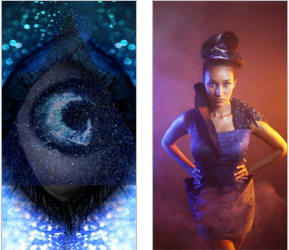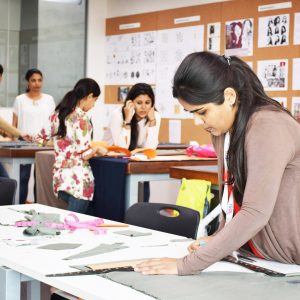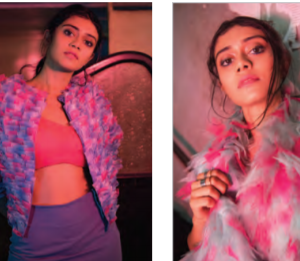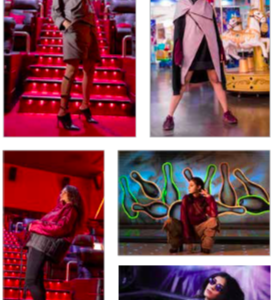Explore The Many Types Of Fashion Designing
Are you considering pursuing a career in fashion design? Did you know you have to separate ready-to-wear and luxury designs? Fashion thrives endlessly.
Fashion designing is more than a profession, it’s art. To work with art, you need to know how to balance aesthetics that bring out the natural beauty of a person. There are various types of design in a fashion that you need to explore to figure out your passion.
We will be right here to help you with the process, but first, tell us – did you know the fashion industry is the 4th largest sector in the world?
Woah, wait, what does this mean for you? You will soon become a part of, and quite possibly lead an integral sector and should clear your basics soon. For starters, let’s understand the many types of fashion design so you can pick your favorites!
Types of fashion designing
Let us get down to business. To start off, there is essentially no difference between the types of design in fashion and the types of designers in fashion.
Most designers work in a specific fashion designing field, and to be a successful designer, you will need to choose your field.
Onto another important question of yours – how many types of fashion designing exist?
There are five primary types of fashion design:
- Haute Couture
- Luxury Fashion
- Ready-to-wear Fashion
- Economy Fashion
- Fast Fashion
Read on to find out in detail all about these fashion designing types and types of fashion designing courses for all the things you have to check off your decision list. Let’s dig deeper into what these forms entail.
-
Haute Couture
Haute-couture in fashion serves high-end and unique clothing designs. It implicates the creation of art in the form of limited-edition apparel and accessories, and applies to custom-made clothing for individual clients.
When designing clothes for your clients, you’ll ensure they are hand-crafted and the fabrics used are of the finest quality.
Here’s an interesting twist in the mix – to have your work considered haute couture, you need to have a designation from the French government. How cool is that! You’ll have a smaller clientele and will end up curating an individualized piece for each client.

-
Luxury Fashion
You might have seen luxury fashion being used interchangeably with Haute Couture, but make sure not to make the same mistake. While luxury fashion also serves a high-end clientele, its high-quality garments aren’t as restricted.
However, the fact remains that the fabrics and designs serve one-of-a-kind customers, and hence are restricted in their availability on these factors:
- Pricey materials
- Intricate designs
- High-quality garments
- Slow-production
While luxury fashion is limited in its access, its demand is ever-growing. Making exclusive designs will surely pique your interest and get your brain cells working.

-
Ready-to-wear
This type of fashion designer is also known as prêt-à-porter and is responsible for mass-producing designs in standardized sizes. The quality of the material used is considerate of the customers and keeps in mind their general requirements.
An in-depth classification of types of design creates a distinction between prêt-à-porter and mass-market designs. You can see a distinction between them in the following manner:
- Mass market designs are available for a larger audience as compared to ready-to-wear designs.
- Mass market designs are rarely set up as limited editions.
- The body sizes accommodated by mass-market designs are more varied as compared to prêt-à-porter designs.
One impressive characteristic of prêt-à-porter designs is that, unlike haute couture, the designs aren’t personalized and excessively labor-intensive. Hence, the designs can be mass-produced.

-
Economy Fashion
The best way to remember the characteristics of economic fashion is to understand how it needs to be economical. In this type of design, garments are mass-produced – efficiently and inexpensively. The cheapest available labor and material is used to make increasing profits.
Yes, it’s the economy fashion you see whenever you go to the mall during an end-of-season sale. Economy Fashion can be seen as the most useful because most people don’t keep a high budget to spend on clothing.
However, this form of fashion is the least environmentally friendly. They are low-quality standard garments and are in use for a shorter period.
-
Fast Fashion
Do you remember how during the lockdown, the term fast fashion was increasingly circulating to see its accountability? The clothes under this type of fashion design are usually mass-produced and have quick rotation styles.
Fast fashion follows high-end designing styles – only the designs are tweaked and manufactured for a larger audience. The pandemic opened up avenues of discussions around fast fashion since people no longer had anywhere to go, quick-paced designs were neither required nor manufactured. The fast fashion industry has, however, quickly recovered, and is booming as ever.
While fast fashion is noticeably in use, it has a considerable negative impact on the environment and economy in general.
Also Read: Is Fashion Designing the right career for you?
Other types of fashion designs include:
- Footwear: includes design of shoes, sneakers, athletics, flats, high heels etc.
- Accessories: includes design of handbags, earrings, necklaces, bracelets, and other accessories.
- Sportswear: designs ensure the form and function of the materials used is suitable for sports.
- Childrenswear: designs include clothing suitable for children of all ages.
- Evening wear: designs include either formal or casual party appropriate clothing like ball gowns, tuxedos, etc.
- Sustainable fashion: keeps in mind apparel which is not only eco-friendly but also ethical in its material sourcing
There are various fields and types of fashion designing courses you can explore, but always remember to be conscious of your creative needs as well as the needs of your customers.
How can ISDI help:
If you want to create fashion designs that communicate and get praised for quality and accountability then you’re at the right place!
ISDI offers various design programs such as Fashion Design, Fashion Communication and Styling, Strategic Design, Communication Design, Product Design, and Management. Pursuing one of the degree programs, that is, Bachelors in Design (BDes) – 4-year program or Postgraduate In Design (PGDI) – 11 months program. Either of the programs is an alternative to a career in design.
The ISDI campus is located in the business district of Mumbai, the commercial center of India. ISDI consists of a curriculum that is based on that of the Parsons School of Design, experienced and industry-leading faculty, and practical project-based training, all situated on a state-of-the-art campus. ISDI is just the right place for someone looking to start a career in design.
“Fashion is the armor to survive everyday life”









